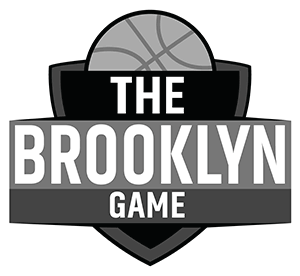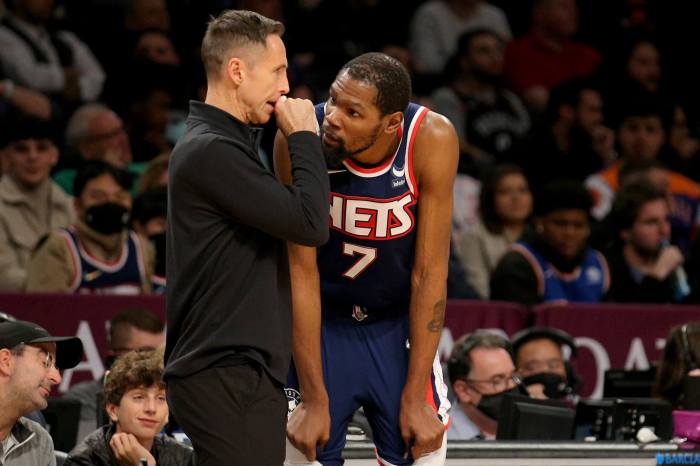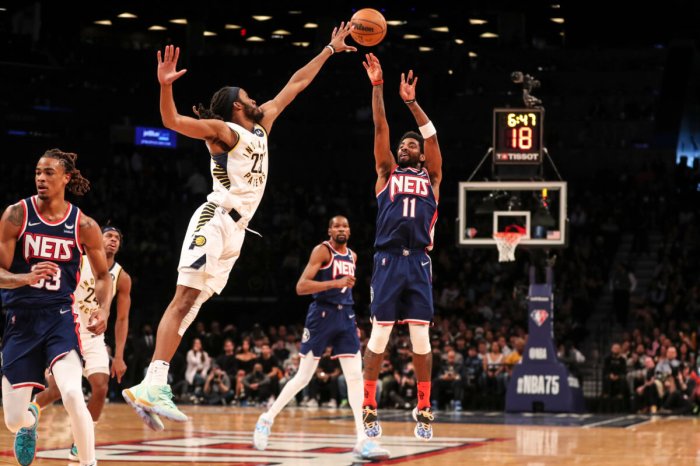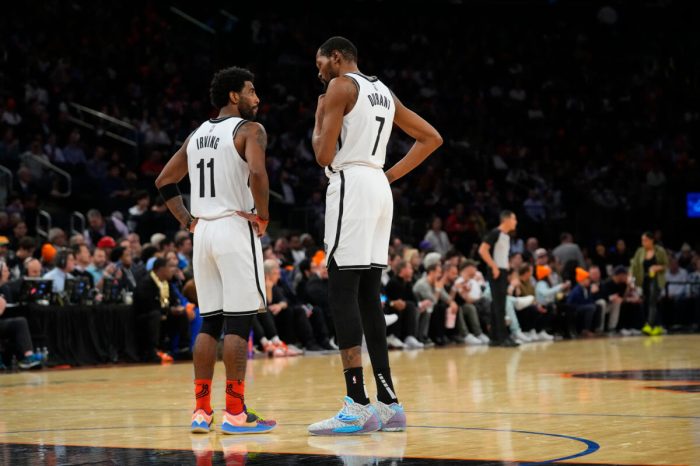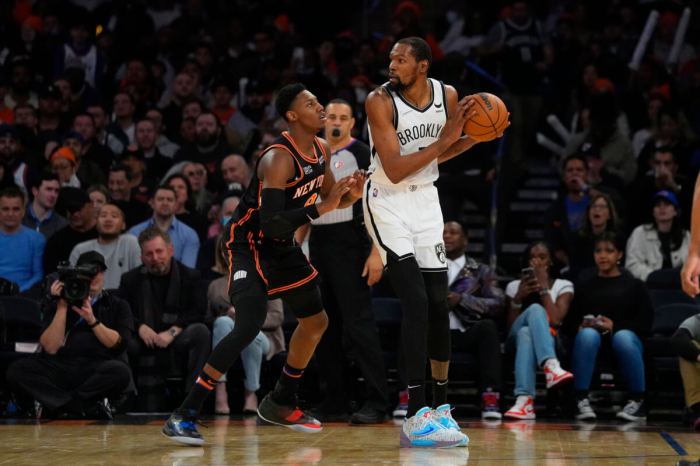The Brooklyn Nets underwent one of the most chaotic seasons of any professional team in the Big Apple in quite some time. Picked as one of the favorites to win an NBA title this season, their collapse rivals some of the area’s biggest letdowns, which include several of the New York Mets’ most memorable season-ending disappointments.
Sure the Nets were dealt some bad hands over the course of the year, but they were also the victim of their own doing. Here is a look at some of what went wrong for Brooklyn, both in their control and out of it, that turned this season into a chaotic mess.
Kyrie Irving’s saga
Kyrie Irving knew the risk he was taking by sticking to his guns and not getting the COVID-19 vaccine. No, not the medical risk, but the one to his professional reputation. Irving’s decision to remain unvaccinated had an impact on just about every aspect of the Nets’ season and in part was why the Nets lacked cohesion even after he was back on the floor.
There’s no denying the toll that took on Irving and the Nets organization as he watched from afar, barred by the club from playing because he was unvaccinated, and then even when he was back in January in a part-time capacity. Irving himself even admitted as much for the first time after the Nets were eliminated on Monday night.
“I think it was just really heavy emotionally this season,” Irving said. “We all felt it. I felt like I was letting the team down at a point where I wasn’t able to play. We were trying to exercise every option for me to play, but I never wanted it to just be about me. And I think it became a distraction at times. And as you see we just had some drastic changes.”
His absence in the first quarter of the season forced Brooklyn to lean on other players more than it had anticipated and it meant others needed to take on different roles than they were accustomed to. James Harden struggled as he tried to adjust to playing on a Nets team without Irving.
And speaking of Harden, Irving’s decision without question played a part in why he ultimately wanted out of Brooklyn for what he saw as greener pastures in Philadelphia.
when Irving was allowed to play part-time after the Nets relented on their initial decision to sit him unless he was vaccinated, the Nets struggled to build chemistry with their lineup constantly changing. The pundits have honed in Irving all season long for his decision and it will be disected for months to come, but it’s clear the impact this had on the Nets’ season.
Injuries, COVID, Trades & the lack of continuity
By the time the Nets had finished the regular season, they had set a league-high and single-season franchise record by using 43 different starting fives, with a single-season franchise-record-tying 19 different players drawing at least one start. The wild stat highlight just how much change had seen over the course of the first 82-game season since COVID.
For more Nets coverage, visit AMNY.com and our affiliate site at TheBrooklynGame.com
The constant turnover never allowed the Nets or Nash the opportunity to settle into a lineup and rotation that fully found its groove. Irving’s previously mentioned absence was the first blow for the Nets and then they lost Joe Harris after just 13 games into the season.
COVID struck the Nets in late December, which saw at one point 13 players in health and safety protocol at the same time, and then cue the loss of Durant on Jan. 15. James Harden eventually forced his way out of Brooklyn which added to the roster chaos and Irving was in and out of the lineup and Ben Simmons, acquired in the Harden deal, never was able to make his debut.
All in all, it created a situation that never allowed the Nets to gel and it showed during the regular season and during the postseason against the Boston Celtics. Brooklyn constantly talked about how their team was still a new group even as the Nets fell behind the Celtics in their first-round matchup.
“I think that’s a big reason why we were in that position, a lack of continuity,” Nash said. “Kevin having to carry such a heavy burden to keep us in the playoff picture. All those things off the floor play a role in what happens on the floor as well. They’re tied, and there’s no question that it has an impact.”
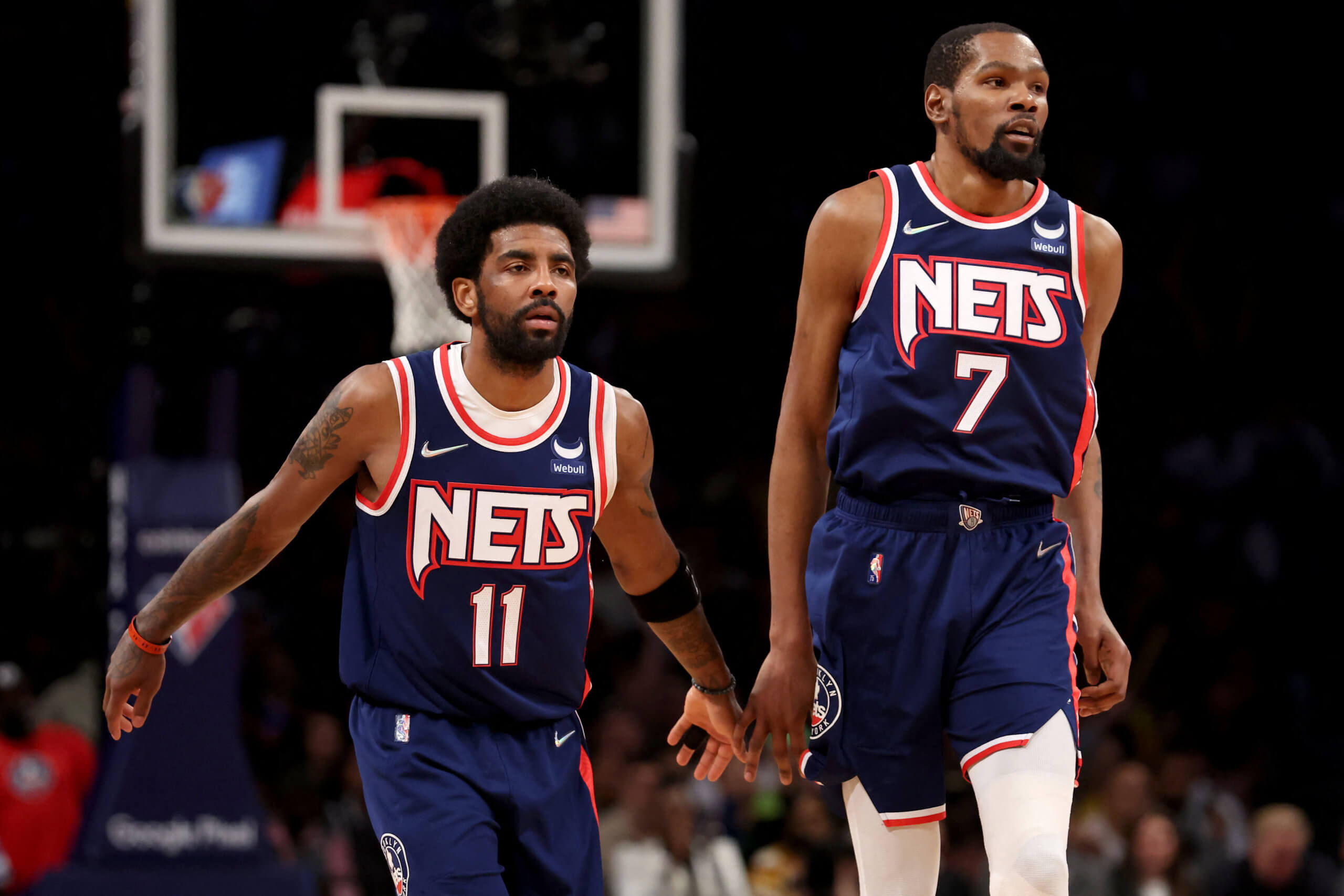
Reliance on their stars
The Nets’ season was always going to depend on the successes of their Big 3 this year, which flamed out in the end. Durant had as good of a year as anyone could have asked for, but injuries forced him to part of the year and the Nets appeared to implode without him on the court.
Harden eventually became disenchanted by the situation and he struggled through the first quarter of the year with Irving on the floor. Add Irving’s circumstances and it combined to make it a tough situation for Brooklyn to ultimately succeed. The Nets’ role players stepped up when they were called upon, Patty Mills had a strong season and Bruce Brown become the Nets’ third-best player after the trade deadline.
But the Nets’ depth and reliance on its star players proved to be a problem, especially in the postseason where it became clear depth was needed.
“S— happens. No crying over spilled milk,” Durant said. “It’s about how we can progress and get better from here. We see we’ve been through a lot this year. Everybody in the organization knows what we went through. So no time to feel regret or be too pissed off. It’s about how we can find solutions to get better, proactive as an organization to get better.”



